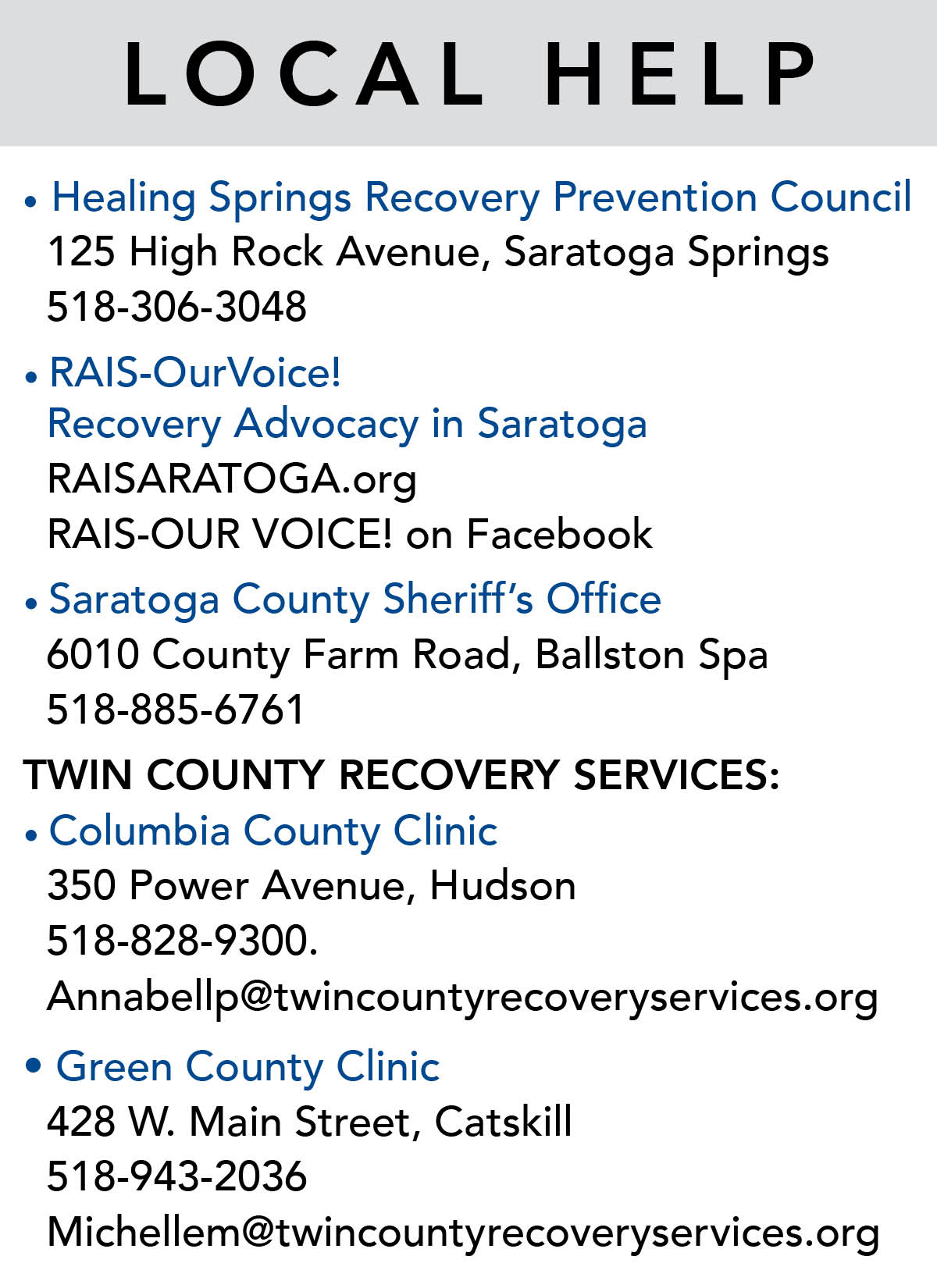WITH ALL THE SOBERING statistics statistics surrounding addiction, it is important to pay attention to how and when recovery happens, what it looks like, and to see it as a signifier of hope for loved ones who are still in the grasp of addiction.
There are 20 million people in recovery in the United States, with more making the courageous attempt every day to join those elusive ranks. I have talked with counselors who say that, for every five people who enter a treatment facility, only one will remain sober for the long haul. Most people will relapse at least once along the way, and others will die tragically after leaving the all-to-brief 28 days of rehab and resume their previous level of opioid use, often resulting in a fatal overdose. But others will prevail.
According to the National Institute of Drug Abuse, the relapse rates of other chronic diseases, such as diabetes, heart disease, hypertension and asthma, are comparable to the relapse rates from substance abuse disorder. The difference is in the way we treat people with diabetes or hypertension. Nobody goes to jail for going off his or her high blood pressure medication and ordering steak, French fries and cheesecake at dinner. While the tendency has been for people to equate relapse with lack of moral fiber or just bad behavior, hopefully those stereotypical views of addiction are changing.
Of course, with the awareness of any disease comes the responsibility to treat it and adjust one’s lifestyle to keep the disease from worsening or killing us. Just as it is a conscious choice to take your daily heart or asthma medication, it is also a conscious decision to adhere to a treatment program and a lifestyle that promotes healing and recovery and reduces the chances of relapse.
For those 20 million people in recovery, there is always hope. And there are resources and people out there who are ready to help. Many of them know about addiction firsthand. They have gone through the difficult process of withdrawal, rehabilitation and recovery. For those people, part of their own recovery is helping others get through it.
Recovery has many different facets and there is no one defined path that will guarantee success or spell certain failure.
FOR CHRISTIAN, recovery has been a long and winding road. He started drinking at age 15 and continued to abuse alcohol and drugs for the next 30 years. Although alcohol was his drug of choice, Christian was an equal opportunity abuser. He rattles off some of the drugs he has used “recreationally” over the years – cocaine, methamphetamines, fentanyl, heroin. You name it, he used it.
During those 30 years, Christian slowly withdrew from the kind of life experienced by people who do not suffer from the disease of substance abuse. He kept telling himself that he could control his drinking and drug use. He was wrong. As his disease progressed, he became unable to hold down a job, he was alienated from his family, and he only “socialized” with others who also liked to “party.”
“I was disconnected from life. The only thing I was connected to was alcohol and drugs. I thought I was losing my mind. It was a tipping point.” Christian knew that if he didn’t get help, he would die.
Christian says that the opposite of addiction is, in fact, connection. When a person embarks upon recovery, his/her awareness of all that has been missed, ignored, or abandoned gradually emerges through the fog of withdrawal and the clearing mists of recovery.
FOR CAROL, a wife, mother and teacher in the Burnt Hills School district, addiction did not fully blossom until she was in her late 50’s. After a lifetime of suppressing her own needs, frustrations and anger, she found herself at a crossroads. Her children were grown and out of the house, and she was left alone with a failing marriage.
“I always knew that I had trouble with alcohol,” she says. But it wasn’t until she made the decision to end her marriage and strike out on her own that the walls of addiction came crashing in on her. Carol describes herself as the classic co-dependent. She wanted everyone to be happy and she sublimated her own needs, frustrations and desires in order to please others.
When she finally made the courageous decision to leave her marriage, suddenly those buried issues came roaring to the surface and, because she had never really faced them, she had no coping skills. Drinking was how she managed, but she didn’t manage well for long.
Carol says that nothing “really horrible” happened, unless of course you count the DWI and the fact that she had no control over her life. For someone who kept everything suppressed, the floodgates opened, and she was carried along helplessly by the tide of her addiction to alcohol.
It was an intervention by her fellow teachers that helped Carol come to the realization that she needed help and she couldn’t do it alone.
IN APRIL 2005, BRENDAN fell down some stairs, breaking his tibial plateau and severing an artery in the process. He spent the next two months in the hospital and went through 19 surgeries. He was in constant pain and, of course, the severity of his injuries warranted the dispensation of opioids.
Brendan never had to resort to scoring his drugs on the street or transitioning to heroin; his doctors had no reason to think that he was exaggerating about his level of pain. And they continued to prescribe large quantities of highly addictive opioids for him. Like most addicts, Brendan was very good at lying and manipulating to get what he needed.
“It finally got to the point where I couldn’t keep up the façade.” On Mother’s Day weekend in 2012, Brendan’s wife issued an ultimatum: either get help or leave.
“It was following a surgery and I had just gotten a refill of my prescription. I took 60 of the 90 pills in just three days.”
Brendan called an addiction hotline and entered a support group the next day.
CHRISTIAN. CAROL. BRENDAN. Three very different people with very different stories, all bound by one common denominator: their helplessness in the face of addiction. Each of these courageous people is at a different place in his or her recovery.
Christian will soon be celebrating one full year of sobriety. After 8 or 9 failed attempts, this time he totally immersed himself in his sobriety, living in a halfway house following rehab and committing to the 12-step program offered by AA. He volunteers as a greeter at Healing Springs, answering phones, helping people find treatment programs and just giving them a call now and then to let them know they are not alone. “I am a support person. I’m there to connect people with others and with resources. That’s huge – when you’re an addict you don’t know how to connect with other people.”
“I don’t socialize with people who use – of course I have friends who drink normally and I’m ok with that – but I don’t hang with people who party, and I’m now in a supportive living apartment.” Christian spends three days each week working with others as a volunteer and he attends meetings five days a week.
Carol has been sober for 16 years. She is retired from teaching and spends a lot of her time volunteering at Saratoga Hospital, as well as attending meetings and support groups. She goes to these groups four or five times a week. Carol knows that support groups and meetings aren’t for everyone; but, for her, they have been an indispensable part of her ongoing sobriety.
She is also training to become a Recovery Coach and she spends a lot of time at Healing Springs, participating in the many programs, classes and events they host. “There are so many resources here and they connect people with programs and other people who can help. There’s a lot of little miracles that happen here,” says Carol.
Brendan had a small relapse after his first attempt at recovery, but he picked up the pieces and he just celebrated three years of sobriety this past January. While the path he is now on is different from what he had originally planned – he has a master’s degree in Rehabilitation Counseling, which is more focused on people with disabilities – he joined the Prevention Council four months ago in a new role for the organization as a Family Support Navigator. This is a brand-new position and there are only about 18 people doing this job across the state. After going through his own addiction and seeing what he put his family through, when Brendan found out about the job, it seemed like a perfect fit.
“I’m the kind of person who’ll stop at the side of the road and help you change your tire.” Brendan gets to satisfy that urge to help others every day in his new role. Like the others, Brendan also continues to actively participate in his own ongoing recovery.
“Recovery is a process that you keep choosing every day – being vigilant and following a program.” He is still in pain every day. It’s a fact of his life. He handles it a lot differently these days, though, focusing on holistic treatments and receiving regular acupuncture treatments, which he says work wonders.
When I asked each person what they want others to know about people in recovery, they all had similar answers. The most important message they want to convey is that substance abuse is a disease – a disorder. People working through addiction and recovery are not morally deficient or lacking in willpower, and their disease does not make them bad.
They also want to deliver the message of hope. For families and friends suffering through the addiction of a loved one, they want to say this: “Don’t give up hope on us. We are sick people, trying to get better. Recovery is possible and there is a whole community of people who want to give their support and help.”





 How to resolve AdBlock issue?
How to resolve AdBlock issue? ![Opioid Nation - Part Five [Final]](/media/k2/items/cache/07bce75e71dd210d827dcc64561630b2_XL.jpg)
































